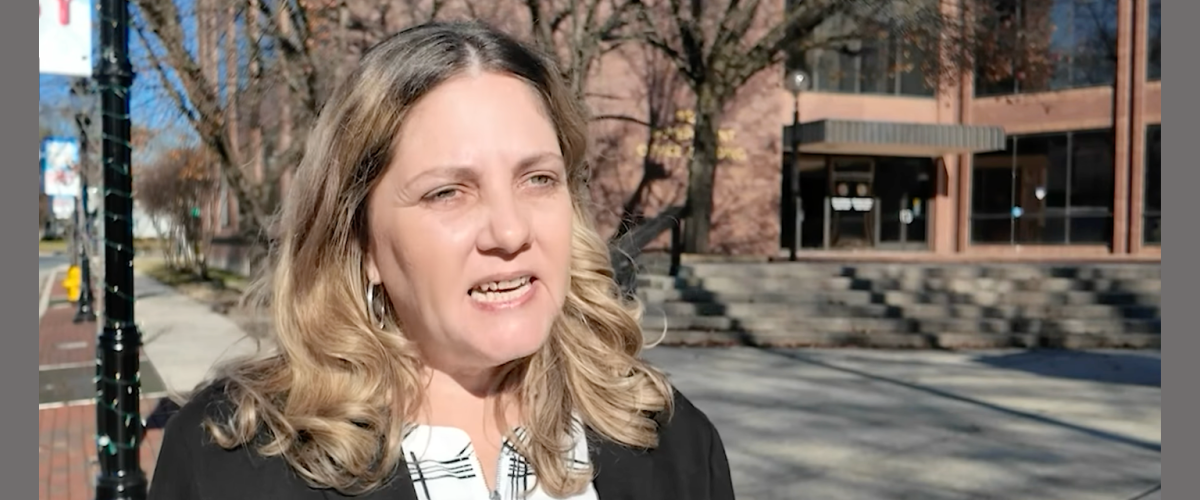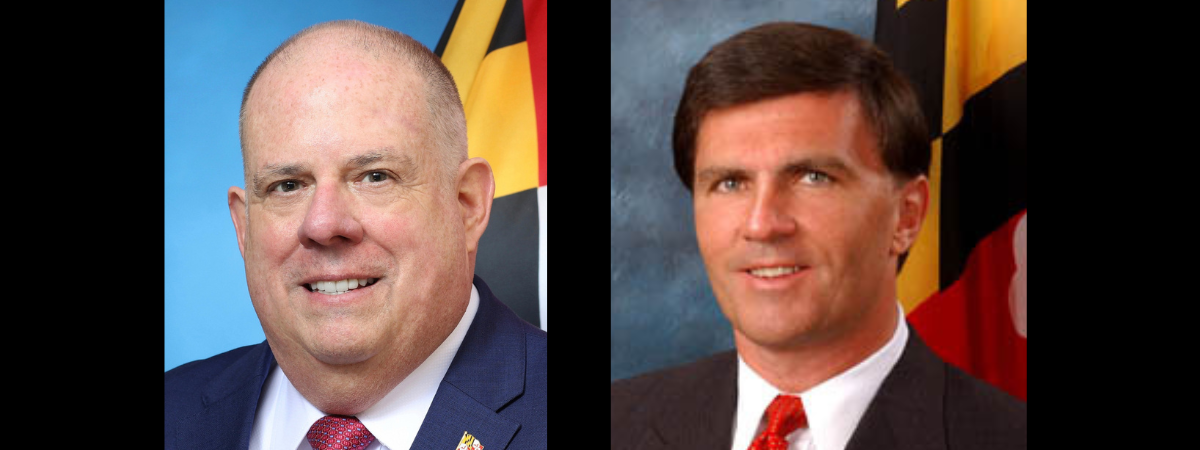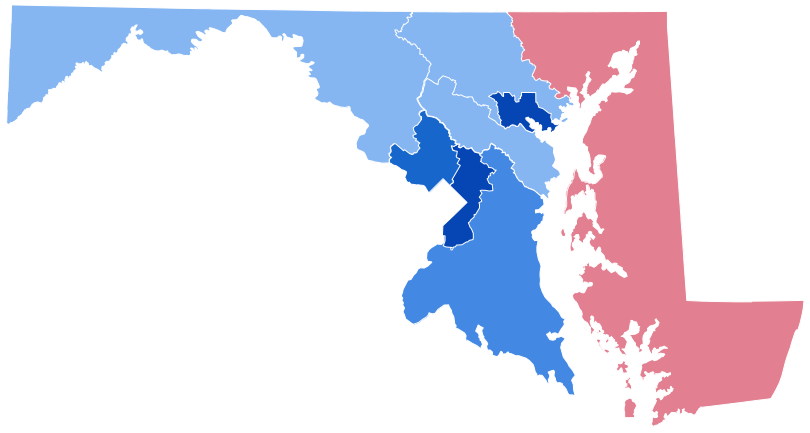Childcare is Scarce in Maryland — and the Pandemic Made Matters Worse

Halfway through her 12-week maternity leave last summer, Sarah Haddaway didn’t expect the trouble that would accompany her search for childcare.
After unexpected rejections from one fully booked childcare facility after another, the lifelong resident of Maryland’s western panhandle began calling every provider she could find.
Almost 11 months later, Haddaway’s son Brooks — who just turned 1 — is on at least seven providers’ waitlists. He’s been on those waitlists since the end of July 2023.
“It’s a nightmare,” said Haddaway, who is from Frostburg, in Allegany County. “There is no opening anywhere you look. It’s like winning the lottery.”
Parents across Maryland and the nation face the same struggle for one simple reason: the number of children who need childcare exceeds the number of slots available in child care facilities.
The covid-19 pandemic made matters worse. Maryland lost 15% of its childcare providers and nearly 7% of its child care slots from Jan. 1, 2020, through Jan. 1, 2024, according to state statistics retrieved by the Local News Network. Those stats show that the number of childcare slots in Maryland fell by 15,152 in those four years.
Some Maryland counties experienced especially dramatic changes. St. Mary’s County, in Southern Maryland, lost more than a quarter of its providers. Caroline County, on the Eastern Shore, lost nearly a quarter of its childcare slots.
In other words, in many parts of Maryland and the nation, childcare has gone missing. In this project, the Local News Network details how and why it happened and what can be done about it. Included is a county-by-county-look at childcare trends, which readers can access here.
It’s not just Maryland families who struggle to find childcare. A national survey of 2,000 Americans conducted in November 2023 for Care.com, a company that tries to match families with caregivers, found 65% of families with young children had spent time on childcare waitlists.
Many childcare providers nationwide left the business amid the pressures of the pandemic, said Dr. Jay Belsky, a child psychologist and professor of human development at the University of California, Davis. He said that’s one reason why families struggle to find childcare in a nation that, unlike many others, doesn’t offer consistent federal support for it.
“What covid showed us was how fragile the childcare system was,” Belsky said. “We don’t have a childcare system. We have a non-system.”
‘Super, super difficult’
Childcare providers closed their doors in recent years for a variety of reasons tied to one central fact: their work is harder now. In a Local News Network survey of 256 current childcare providers in Maryland, 62.5% said their jobs have become more difficult since the start of the covid-19 pandemic.
Asked to cite the challenges they face, 57.4% of childcare providers listed financial stability, while 48% cited burdensome state regulations — issues that are connected, according to many providers. Meanwhile, 46.5% of the providers surveyed said they struggled to hire quality staff.
Childcare providers who left the business in recent years echoed those concerns.
Ben Stelle founded Kidpower at Silver Spring International in 2003 under a contract with Montgomery County that allowed him to work directly out of a school.
“It’s super, super, super difficult to turn a profit if you don’t have the kind of sweetheart deal that I had,” Stelle said. “Unless you were getting subsidized and had your own sort of small monopoly on a school area, you were out of luck.”
He attributed this mostly to Maryland state regulations, which require that childcare centers have one adult employee for every three children under the age of 2.
“You couldn’t turn a profit because you couldn’t stay affordable at the ratios that were being forced upon you,” Stelle said.
Raven Hill, a spokeswoman for the Maryland State Department of Education — which oversees childcare in the state — said there’s a good reason the state requires more staff to supervise the youngest children.
“The 1:3 staff-to-child ratio for infants ensures that children receive high-quality care and activities,” Hill said. “Younger children typically need more care and attention, and smaller group sizes allow adults to interact more easily with each child and respond to their unique individual needs.”
Stelle decided to leave the childcare business, ending his contract with the county before the end of the 2021 school year, for reasons other than state regulations. He said he was fatigued after decades of working with children.
“The glamor of it wore off,” he said.
Candace Hall, who operated a childcare facility out of her home in Montgomery County, cited a different reason for why she closed her operation in 2021.
“The last licensor specialist I had was extremely rude and demeaning,” Hall said in response to the Local News Network survey. “I decided after that last inspection, I would have to close down as I will not be disrespected in my own home.”
Meanwhile, Maxine Seidman — who owned and operated Play Keepers Inc. out of a school in Randallstown for 40 years — said her income fell as the pandemic prompted parents to keep their children at home. Some of her staffers left, too.
“Certainly none of us were making the kind of money we were making before, which wasn’t a whole heck of a lot,” Seidman said. “But this made it very difficult to get staff after covid.”
The struggle to stay afloat during the pandemic was unlike anything she had experienced.
“It was very distressing,” she said.
Seidman decided to retire in 2021. But now she’s concerned about the availability of childcare in Baltimore County, which state statistics show lost 1,821 childcare slots between the start of 2020 and the start of 2024.
“I worry about some of the families,” Seidman said. “Who is taking care of their children? I wonder where those children are.”
A frustrating search
Many Maryland parents also wonder where the childcare providers are.
Noor Shakeel said she knew finding childcare in Montgomery County would be a struggle.
“I was always stressed out, hearing from my friends’ experiences,” said Shakeel, who lives in Germantown.
To alleviate that stress, Shakeel’s parents cared for her son until he was 18 months old. At that point, she could tell he wanted and needed more socialization.
Shakeel and her husband tried to keep an open mind when they started touring childcare centers, but she came across obstacles.
“Distance, safety and money,” Shakeel said. “Those are the three big factors.”
The process is also long, she said.
“It comes to a point when you don’t have a choice other than to settle,” she said.
Eventually, Shakeel’s mother-in-law connected them to a family friend who happened to have an opening in her in-home day care.
“We just got lucky,” Shakeel said.
Other parents are not as fortunate.
Masha Mukhina, an assistant professor of physics at the University of Maryland, moved to Prince George’s County in 2023. Colleagues advised her to add her son, who is now almost 2 years old, to the waitlist for Bright Horizons, a childcare center in College Park affiliated with the university.
Much to her surprise, her son continues to be on the waitlist and has even dropped down a few spots due to aging out of the infant group into the toddler group.
“Children move from this waiting list in and out based on age, and I’m supposed to be on the priority list as an employee of the university,” said Mukhina, who ended up hiring a nanny to care for her son. “And I don’t think it gets me any priority because everyone, more or less, on that waiting list is in the same position.”
Several childcare providers said availability is especially tight for families seeking care for children under the age of 2.
“Because of the regulations and because of the guidelines that surround children under the age of 2, many of the providers and centers are no longer taking infants, which is making it harder to find infant care or childcare for children under 2 throughout the state of Maryland, not just Baltimore," said Brenda Velez-Jimenez, who operates Brenda’s Little Monkey Daycare in Catonsville, in Baltimore County.
A continuing struggle
As difficult as it is for families to find quality childcare now, some providers across Maryland fear the situation will get worse before it gets better.
For one thing, the federal government offered temporary aid totaling about $24 billion to prop up the childcare industry during the pandemic. That program expired in September 2023.
On top of that, several providers noted they face new competition from unlicensed providers that popped up during the pandemic and operate without the same costly restrictions imposed by state regulations.
“You’ve got other children’s neighbors that are providing unlicensed care,” Velez-Jimenez said.
Velez-Jimenez criticized the state for not doing anything about those unlicensed providers, but Hill, the Maryland State Department of Education spokeswoman, begged to differ.
“The Office of Child Care investigates all illegal childcare complaints within 10 days of receipt,” she said. “A cease-and-desist letter is issued to providers informing them that they must stop providing childcare if they are doing so.”
Other childcare providers expressed fears about another new competitor: the new state pre-K program for 3- and 4-year-olds to be implemented over the next few years under the state’s education reform plan, the Blueprint for Maryland’s Future.
While private childcare providers are being counted on to join the pre-K program, some worry they will lose clients — and income — once the state starts offering free pre-K to 3- and 4-year-olds.
“We are terrified that if we lose our 3- and 4-year-olds, you’re going to see centers closing down right and left because there won’t be enough income to support the teachers who work there,” said Flora Gee, pedagogical administrator at the Greenbelt Children’s Center in Prince George’s County.
Gee said her facility has already been losing teachers to public schools that pay twice as much, and she isn’t the only childcare provider who worries about staff shortages.
“Finding and retaining competent employees who align with my day care facility’s values and standards is a constant challenge,” said Yvette Gordon, who runs a family childcare facility in Baltimore City.
Kelli Deist, who runs an in-home day care in Frostburg, in Allegany County, said there’s an obvious reason for childcare staffing shortages.
“We don’t get paid what we deserve,” she said.
During the pandemic, the state permitted Deist to take in children of essential workers in exchange for state compensation.
“Financially, it was a struggle because we weren’t allowed to charge the parents,” she said. “The state was supposed to be paying us, but because it was such a big, new thing, they were way behind. I went three months without any payment at all.”
A nationwide problem
Maryland’s childcare shortage is part of a nationwide phenomenon. According to the U.S. Bureau of Labor Statistics, as many as 100,000 Americans have been forced to stay home from work because of their struggles to find childcare.
“This burden falls disproportionately on women of color who are on the frontlines of many essential jobs,” said Tina Kauh, a senior program officer and childcare expert at the Robert Wood Johnson Foundation. “Many are also childcare providers who face the monumental feat of juggling their low-wage, high-risk jobs with caring for their families and themselves in the midst of a pandemic.”
With childcare slots in such high demand, parents end up paying more and more. Care.com in 2023 found families responding to its survey spent 24% of their income on childcare — even though the federal government considers child care affordable if it takes up 7% or less of a family’s income.
Families spent an average of $321 a week on day care, up 13% from $284 in 2022, and many families are going into debt to pay childcare bills.
“Within the first five years of their child’s life, parents are being forced into a financial hole that is nearly impossible to climb out of,” Care.com CEO Brad Wilson said in a statement announcing the study’s findings.
The United States is unusual among developed nations in that it has no universal support system for childcare or standardized policy on parental leave. Maryland offers a scholarship program that helps subsidize the cost of childcare for lower-income families, but it does not cover the full cost.
Belsky, of the University of California, Davis, said he believes there should be a system in place that gives parents a choice to stay home to raise their children if they want, or to be able to choose a high-quality care facility.
“Giving families with young children more support, including economic support, might afford them the ability to more freely choose what they feel is best for their young children’s care,” Belsky said.
But for families where both parents work, stable childcare is a necessity, Belsky said.
“Especially at younger ages, stability of care is preferable, desirable, if only from the standpoint of quality of life,” he said.
That stability is important for kids and parents alike, according to Natasha Cabrera, a University of Maryland expert on human development.
“The first five years of life [and] the first year of life is critically important for brain development,” said Cabrera, a professor at UMD’s College of Education. “Children are like sponges. Their brains are ready, and they’re wired to learn, but they need the cognitive stimulation from the environment.”
The childcare shortage could have negative consequences for children across Maryland, such as decreased trust, lowered academic success or increased risk for developing a mental illness, she said.
“It’s awful,” Cabrera said. “It’s very scary. If you care about the future of Maryland, you need to invest in its children.”
Childcare summaries and statistics for every county in Maryland, along with the city of Baltimore, are available at this link.
Capital News Service is a student-powered news organization run by the University of Maryland Philip Merrill College of Journalism. For 26 years, they have provided deeply reported, award-winning coverage of issues of import to Marylanders.
Local News Network reporters Fiona Flowers and Jess Daninhirsch contributed to this report.
Common Sense for the Eastern Shore







